
This lesson shows how to use GPS and mapping skills to make exercise areas in your community. These can include walking, riding, and biking trails.
- Subject:
- Health Education
- Material Type:
- Lesson
- Author:
- Utah Lesson Plans
- Date Added:
- 12/07/2021

This lesson shows how to use GPS and mapping skills to make exercise areas in your community. These can include walking, riding, and biking trails.
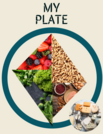
This lesson is a great resource for a Health class when studying nutrition as well as Directed Study or Study Skill classes with life skills standards. The lesson engages students in creating healthy meals with the MyPlate guidelines, as well as has them practice their photography basic techniques. Directed Studies Standard IL3 (Independent Living 3) Students will demonstrate healthy eating and my plate. Health Strand 5 Standard 6.N.1: Locate age appropreiate guidelines for eating and physical activity.

This lesson is a great resource for a Health class when studying nutrition as well as Directed Study or Study Skill classes with life skills standards. The lesson engages students in creating healthy meals with the MyPlate guidelines, as well as has them practice their photography basic techniques. Directed Studies Standard IL3 (Independent Living 3) Students will demonstrate healthy eating and my plate. Health Strand 5 Standard 6.N.1: Locate age appropreiate guidelines for eating and physical activity.
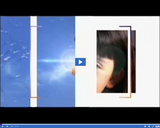
The normal heart is a muscle about the size of a fist. With every beat it drives three ounces of blood through its intricate chambers and around five quarts throughout the entire body. Though we know much about how it operates, the heart is, nonetheless, a miraculous organ that has baffled the generations of scientists who have tried to mechanically replicate its power and efficiency. Endlessly Beating examines the heart as a muscle - pumping almost 100,000 times a day, pushing approximately five quarts of blood in an endless course to deliver oxygen to every cell of the human body. This hour tells the story of the normal heart through the histories of three people with end-stage heart failure, where a pump may be a temporary remedy, but in the long term, a transplant is almost always necessary. The three patients profiled live on the edge of life, existing in a compromised state that will inevitably need drastic intervention. Of the three individuals this hour follows, one will eventually receive the life-saving gift of a transplant; another must depend on an experimental new device to stay alive until a new heart can be found; and the third recovers with the aid of a heart pump, which lets his once-failed heart return to normal.
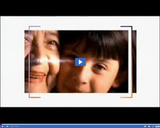
The past 50 years have brought enormous advances in our ability to understand the precisely timed dance that squeezes the heart muscle and pushes out blood to the lungs and the rest of the body. Dramatic new treatments have been developed to help sustain its vital rhythm and to prolong life. These treatments, in turn, have inspired new, very modern dilemmas for patients and doctors alike. Even with advances, arrhythmias lead to 300,000 cases of sudden cardiac death in America each year. In this hour, learn how the body's internal electrical system synchronizes the four chambers of the heart pushing blood throughout the entire body - once a second, 100,000 times a day, three billion times over a lifetime.
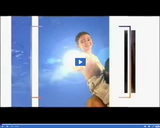
A heart attack can strike at any time and without warning. In minutes it can irreparably damage our hardest working muscle - the heart. And for many, a heart attack is the first sign of heart disease - the world's number one killer. This hour of THE MYSTERIOUS HUMAN HEART explores the causes of heart disease. How does cholesterol affect the heart? Obesity? Smoking? High blood pressure? How does stress affect the heart? Genetics? The program examines the causes behind the growing epidemic and what the world's leading scientists are doing to fight it.

The students will write a video narrative with how they can be safe doing certain activities and every day things.

Students will learn to identify "natural high" activities and their benefits as healthy alternatives to substance use.

Students will use Nearbpod on an individual iPad to examine various mental illnesses, explain how they effect society, identify symptoms, treatment options, and analyze the importance of early intervention and treatment. (Discussion questions, video clips, and polls will be utilized).
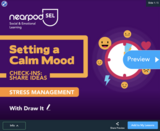
In this Check-Ins: Share Ideas lesson, students practice self-management, and more specifically stress management, by completing a Draw It activity to share words and images that help them feel calm and happy.
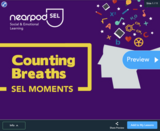
In this SEL activity, students practice CASEL competency by strengthening their understanding of how counting breaths can help them get calm. This lesson can be used to easily infuse social and emotional learning into classroom schedules.

The activities in this lesson will help students understand why tobacco is addictive and how and why people quit using tobacco.
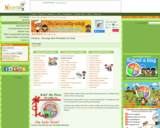
Printables for teachers on healthy foods, healthy habits, and activities by Nourish Interactives.

Count as you are carrying out daily routines.While counting, stop often to ask what number comes next. Ask what number comes after or before a given number.

Students will be assessed on their understanding of how to read and understand nutrient information on food labels. 25 different food labels will be placed around the room. Students will work individually to answer the questions on their bingo cards by using the food labels. For example one question on the bingo card might say which food has the most saturated fat or grams of sugar?

Students will learn about the 6 basic nutrients. They will then learn how to keep track of there food intake using a food tracker app on the ipad. Through this information they will be able to analyze their diet and make corrections where necessary.

This is an interdisciplinary unit for Grade 3 on Nutrition. This lesson will help students better understand the benefits of eating nutritiously and ways they can eat healthier. Students will record their daily food intake and create a bar graph. We will discuss the consequences of poor nutrition in various cultures of the world. Students will learn various nutritional terms.

By understanding how nutrition effects physical and mental wellness, and through tracing the history of the United States through the Oregon Trail which led to western expansion, students have an opportunity to understand the physical and mental difficulties faced by those who traveled along the Oregon Trail, and relate how following the Dietary Guidelines for Americans may impact the health of individuals as well as communities.
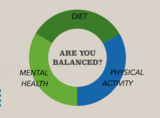
This resource is for Health II classes, but can be modified for Health I. This can be used as a summative project as students will need to have background knowledge from multiple strands. Students will use Apple Pages to submit a nutrtion infographic.

Students will analyze their food and physical activity habits by keeping a food and exercise diary for three days. They will create a personal nutrition and activity plan and follow it for 3 days and report on their success.